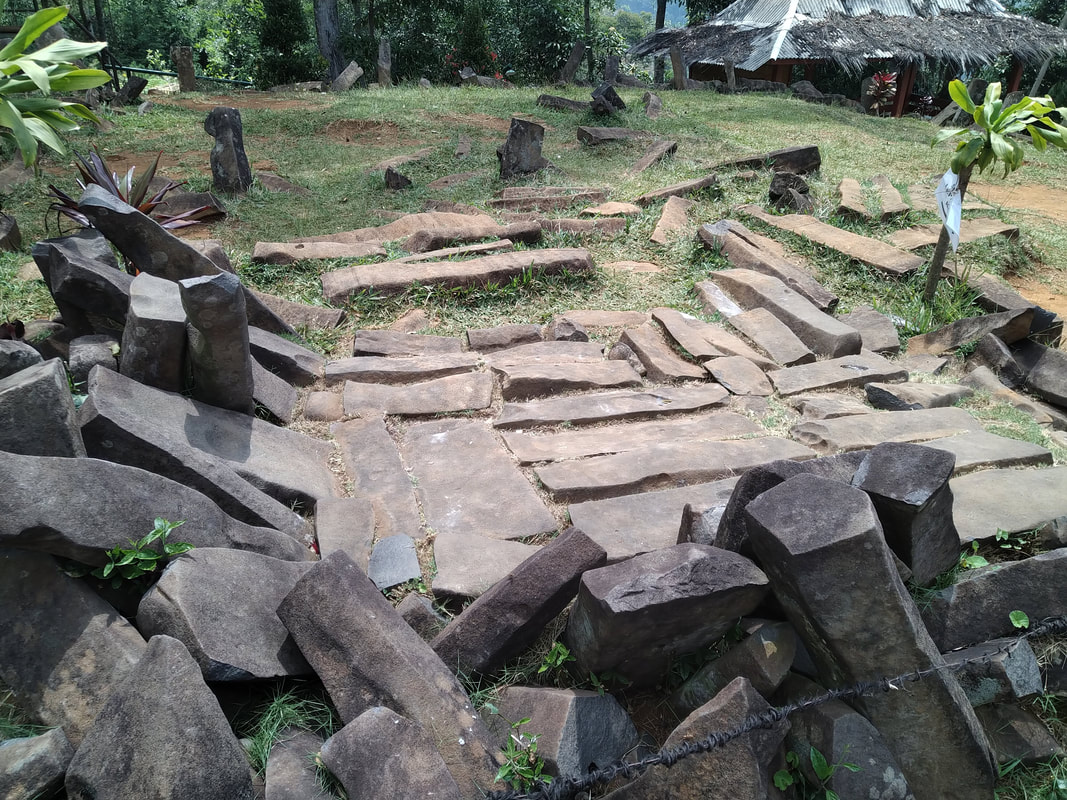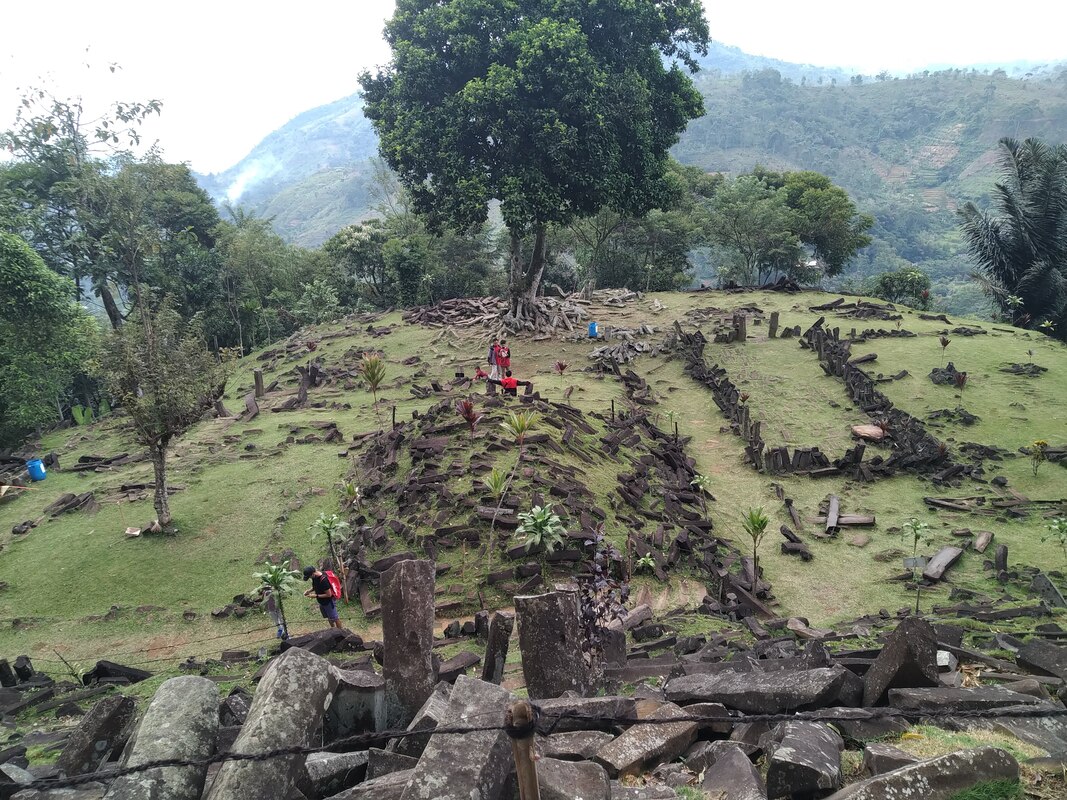Gunung Padang Megalithic Site, Cianjur, West Java, Indonesia
We visited Gunung Padang Megalithic site (Punden Berundak) which located in Karyamukti village, Cianjur regency, West Java Province of Indonesia at 30 kilometers (19 mi) southwest of the city of Cianjur, on October 3, 2020. It has been called the largest megalithic site in all of Southeastern Asia, and has produced controversial carbon dating results which, if confirmed, would suggest that construction began as far as back to 20,000 BCE.
The other uniqueness of this megalithic site is its implicitly describing the symbol of number 5 in any level of the sites, as follows:
In this visit, we had an opportunity to interview one of the keyguards of this site. He explained about the estimation date of this site is about 25,000 BCE, and the meaning of the said five terraces. The first one was the music hall consisting of dolmen, altar, and gamelan stones. The second one consisted of injak kaki stone, lumbung stone, kursi stone dan goresan kujang stone. The third one was injak kaki macan stone. The fourth one was Kanuragaan stone. The five one was the highest throne stone.
Nevertheless, the main issue of this site is the lack of research activity. Many things are actually still needed deep and comprehensive research to illuminate what, who, when and how this site was really for. Moreover, the site is not well-maintained, for example the name sign of this site is missing. This situation is quite such a shame because this site is one of the important monumental megalithic sites not only for Indonesian but also for the world.
We hope that in the near future local and central government, not to mention public, especially archaeologists and historians, local as well as international could gather together and continue to observe and investigate this site to make it clear about the history beyond this megalithic site in order to contribute to the picture of the history of humanity.
The other uniqueness of this megalithic site is its implicitly describing the symbol of number 5 in any level of the sites, as follows:
- This site is surrounded by five rivers, namely Cipanggulaan, Cikuta, Ciwangun, Pasir Malang, and Cimanggu rivers.
- The site is consisting of five terraces, and every terrace is connected by also five stairs.
- The other is that 95% of the rocks were trapezium.
- This site is also surrounded by five hills namely Karuhun, Emped, Pasir Malati, Pasir Malang and Pasir Batu.
- Last but not least, that the orientation of this site is perpendicular to and parallel with the five mountains namely, Mountain Pasir Pogor, Mountain Cikencana, Mountain Pangrango, Mountain Gede, and Mountain Batu.
In this visit, we had an opportunity to interview one of the keyguards of this site. He explained about the estimation date of this site is about 25,000 BCE, and the meaning of the said five terraces. The first one was the music hall consisting of dolmen, altar, and gamelan stones. The second one consisted of injak kaki stone, lumbung stone, kursi stone dan goresan kujang stone. The third one was injak kaki macan stone. The fourth one was Kanuragaan stone. The five one was the highest throne stone.
Nevertheless, the main issue of this site is the lack of research activity. Many things are actually still needed deep and comprehensive research to illuminate what, who, when and how this site was really for. Moreover, the site is not well-maintained, for example the name sign of this site is missing. This situation is quite such a shame because this site is one of the important monumental megalithic sites not only for Indonesian but also for the world.
We hope that in the near future local and central government, not to mention public, especially archaeologists and historians, local as well as international could gather together and continue to observe and investigate this site to make it clear about the history beyond this megalithic site in order to contribute to the picture of the history of humanity.


